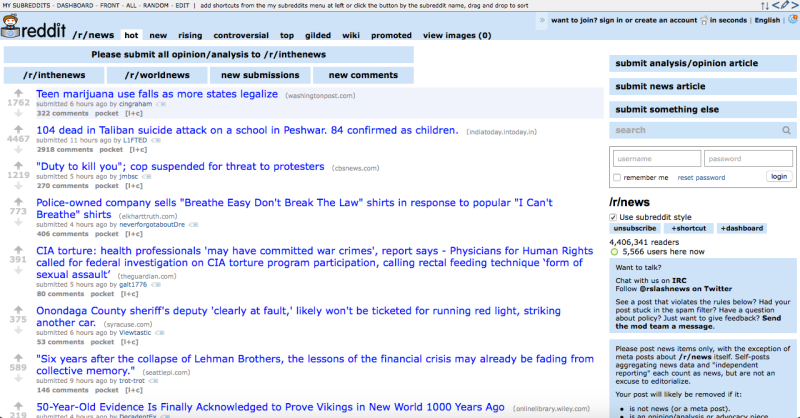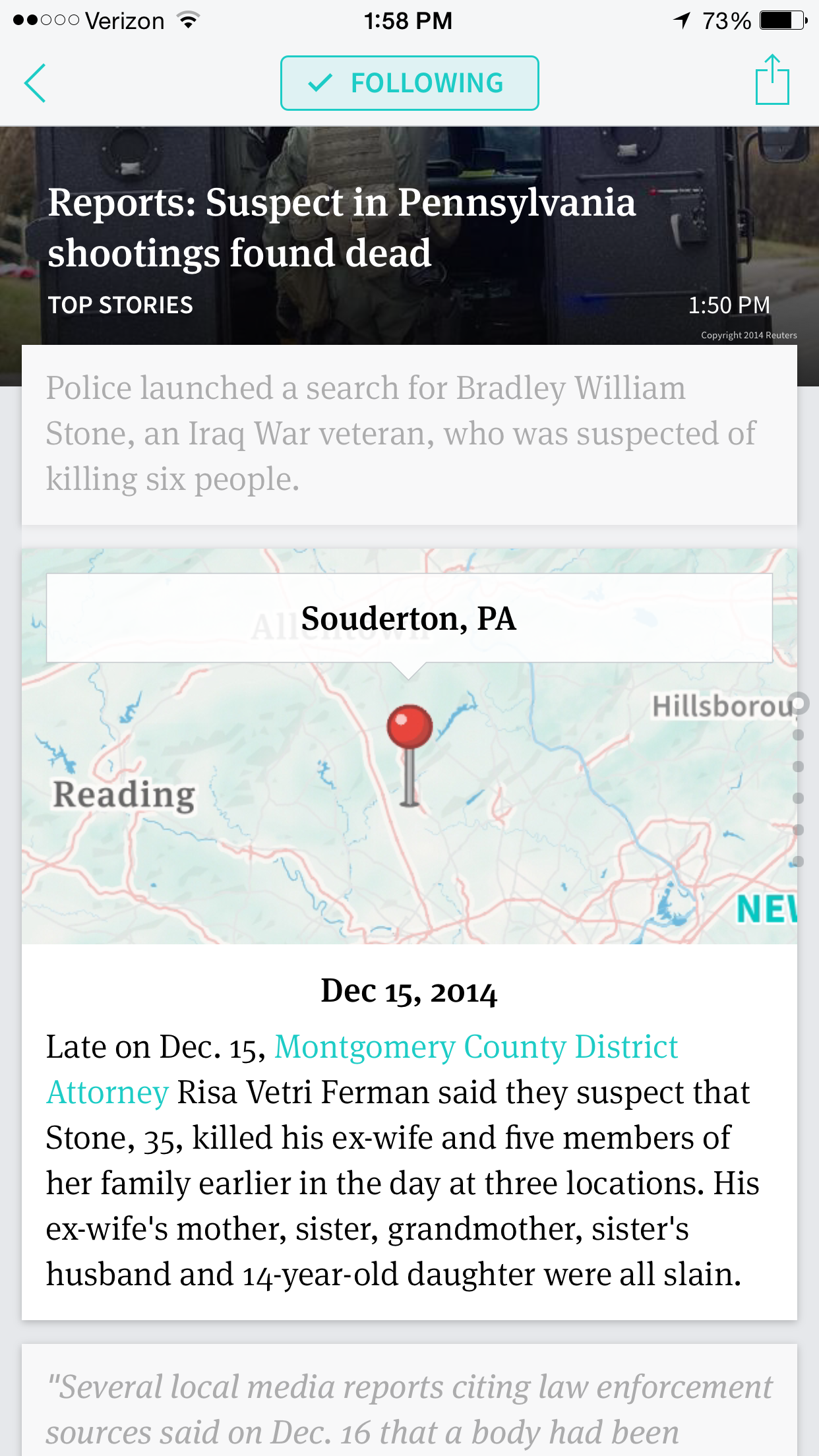Before I got on my flight to Houston yesterday I opened up my laptop and skimmed Facebook. In their “Trending” section at the top of the page, I saw that a high school student had made approximately $70 million off the stock market by trading during his lunch breaks. “Hmm, that’s cool,” I thought to myself. When I clicked on the topic, hundreds of links popped up that had been written by “news” and “media” outlets highlighting the “incredible” story, though they all seemed to have the exact same information as everyone else and only included the same three or four images of the teen. In Facebook’s “Live Feed” section, I was able to read an endless supply of public reactions to the news (that never seemed to stop refreshing) with thoughts and opinions like, “This kid is going places!” and “Wish I had thought of this sooner!” and “What were YOU doing at this age?”
Satisfied with the amount of information I’d received regarding this teen’s new fortune, I closed my laptop and boarded my flight.
This morning, I rolled out of my bed in Houston and went downstairs to grab a glass of orange juice. I then sat down, opened the lid of my laptop, clicked on Safari and went to Facebook (because that’s just how life is nowadays). In the Trending section, I read that the student now admits to falsifying the story that he made millions in stock trades. “That’s not surprising,” I thought to myself. When I clicked on the topic, hundreds of links popped up that had been written by “news” and “media” outlets highlighting the “startling news” and the apparent “hoax” that the 17-year-old student had concocted. In Facebook’s “Live Feed” section, I was able to see an endless supply of public reactions to the news (that still never seemed to stop refreshing) with thoughts and opinions like, “Can journalism get any worse? What happened to vetting your stories???” and “This one reason why some people don’t believe the news media any longer” and “Motherf#$@er!”
Satisfied with the amount of information I’d received regarding this teen’s falsely reported fortune, I closed my laptop lid and went to play with my pugs.
Now, this blog post could have been a commentary on the prevalence of false information that is spread due to the need for people to have the story “first,” and it could have also been a critique of Facebook’s Trending section. I opted against the former because it has already been discussed to death, and I dismissed the latter because the Trending section is exactly what it appears to be: a list of the main topics that Internet users are sharing, liking and talking about, accuracy and relevance be damned. What I am concerned with, though, is the means by which we, as consumers, consume news on a daily basis. Gone are the days when you get home from your 9-5 job, hang up your coat and hat by the door, roll up your sleeves, kiss your wife, set up the TV trays in the living room, and eat pot roast while watching Walter Cronkite, Dan Rather, Tom Brokaw, or Peter Jennings explain what’s been going on outside of your local community. Also (long) gone are the days when you’d wait until the next morning to pick up the local paper and read (old) news, on the off chance that you’d missed the evening programming the night before. I feel like the folks from the mid-20th century would get whiplash from the amount of information that’s constantly being thrown our way on a daily, hourly, and minute-by-minute basis.
I’m mainly writing this because of a conversation I had with a friend of mine a few months ago. We were talking about some kind of current event and he said that reading the news just isn’t a part of his daily routine. The good news is that news consumption doesn’t HAVE to be a chore, as long as you know where to look.
Twitter, while providing only bite-sized snippets of information, helps to break news faster than almost any other tool in the world and can simultaneously provide insight into how topics and events are being received by the public. The hashtag system, while asinine at times [link no longer active], serves as a particularly effective method of categorizing popular opinion. Less than 24 hours ago #illridewithyou was one of the top trending hashtags in the world, and it was used to convey a sense of solidarity with Muslims in the wake of the Sydney hostage crisis on December 15th. Unfortunately, the 140 character cap is very limiting if one were to try and use Twitter as their primary “news source,” despite the ability to add links within the posts to take the user to full-page articles. But for those who need to spread the word NOW, as seen during The Arab Spring and the Royal Wedding (I kid), Twitter is invaluable.
Next up are the traditional websites of popular news outlets like The Huffington Post, CNN, FOX News, etc. Because of the shift from print to digital media, these websites have become inundated with advertisements left and right to generate more revenue. Normally I don’t care, especially when it helps smaller websites say afloat, but if I’m trying to look up the latest information on a crisis somewhere in the world and I have to deal with drop-down, pop-up, pre-video and any other kinds of advertisements while reading, I just back up and try to find another source. I’m looking at you, 30-second advertisements that precede 45-second videos. Couple that with the issues involved with biased or one-sided reporting, and the mix of banal headlines like “THIS DOG WENT OUT FOR A WALK WITH HIS OWNER. WHAT HAPPENED NEXT WILL LEAVE YOU LITERALLY BREATHLESS,” and you’re now finding yourself juggling seven tabs containing several different sources covering the same story just so that you can figure out how much of the information is accurate while also trying to dodge the useless crap.
Here’s where news aggregate sources come in. Many websites, including Reuters, BBC, and Reddit, now provide “live feeds” of the events that are unfolding around the world. This isn’t necessarily live video feeds, but rather a constantly updating stream of information that pulls data from resources like local news crews, on-the-ground reporters, Twitter, news outlets, press releases, photos and videos, etc. It is, in my opinion, one of the best ways to stay on top of a situation (I can’t tell you how many stories I’ve discovered on Reddit before anywhere else: Aurora, the earthquake in Napa, and the situation in Sydney come to mind), but it is also one of the most unreliable. Isn’t it funny how that works? Because aggregates and live feeds pull information from hundreds of sources every second, many of the early reports can be (and usually are) unsubstantiated rumors that aren’t verified. I still remember hearing about the Boston Bombing situation on Reddit and skimming through the comments where users were actively trying to identify the suspect using photos and videos of the crowd. It’s like they watched a few episodes of NCIS and suddenly decided that they were amateur sleuths. The New York Times published an excellent article in the wake of the events in Boston that discussed the Reddit “witch hunt” in detail: “While Reddit has never pretended to be a news organization, it is learning that as it grows bigger and more influential, the rest of the world expects it to exercise judgment—judgment that is often at odds with the freewheeling culture it and its members prize.” It’s funny to see the NYT refer to Reddit as if it is a singular identity or hive mind, but in many respects it’s true. The effects of the Boston Bombing issue on Reddit can still be felt, though, with many of the top comments in breaking news threads warning users to not create another “Boston Issue.”

If you want to see a live feed in action, here is the first mention of the hostage situation in Sydney on Reddit that includes one of the megathreads a user created by collecting up-to-the-minute sources and adding them to a timeline. Note that the top comment in the thread is a warning from one Redditor to the rest of the commenters “do NOT tweet or post news of what Police are doing around Martin Place. Assume jihadists follow social media.”
Then there’s the case of one of my favorite Reddit users, /u/TheEarthquakeGuy. Any time there’s an earthquake anywhere in the world, he will step in and provide context for the rest of us. Here is one of his comments from the 8.0 magnitude earthquake that shook Chile eight months ago. It’s moments like those when the idea of a live feed proves to be not only informative, but also lifesaving for those who are physically near the events.
I can’t mention news consumption without casting a light on our mobile lives. It goes without saying that folks spend a lot, a LOT, of times on their phones nowadays, and that has drastically impacted the ways by which we retrieve information. I remember when Steve Jobs was showing off the first iPhone and touting that it was “the Internet in your pocket for the first time ever.” Well, tech has improved, screens have gotten larger, speeds have gotten faster, and users have adapted to the changing landscape. However, despite the fact that many websites have implemented “mobile” versions of their websites to make it easier for users to read and navigate, it’s still a pain in the butt sometimes. What needed to change was not the way that standard content was displayed, but the way that we interact with the content itself and the ways that the content could be optimized to fit in the palm of a hand.

Enter Circa. Circa is an app that effectively curates and summarizes news stories so that it’s easier for mobile users to retrieve information. There’s a main section that includes the top news of the day, and when you click on a headline it opens up a scrollable series of bite-sized sentences highlighting the main points of whatever’s going on. Photos and maps are included, when necessary, and if it’s a developing or breaking news story you can subscribe to it at the top and be notified when there are new updates available. There’s also a feature called “Wire” that serves as a brief list of news updates you can read every morning before you start the day. If you’re not typically a news junkie, but want to stay informed, Circa’s a great tool. In the same vein, NPR created the (fantastic) NPR One app that streamlines NPR’s broadcasts into smaller segments that users can listen to while on the go. It remembers what you’ve found interesting in order to bring more relevant content to your ears.
So there you have it. Finding the right news source(s) comes down to balancing the pros and the cons, as is the case with almost every decision on the planet. In the end, though, the important thing is to stay informed, regardless of the source or method. Now if you’ll excuse me, I need to go listen to NPR’s coverage of the Russian economic disaster while simultaneously reading about the latest Keystone Pipeline news on my phone and attempting to get #FreeGuggiMane to go viral.



